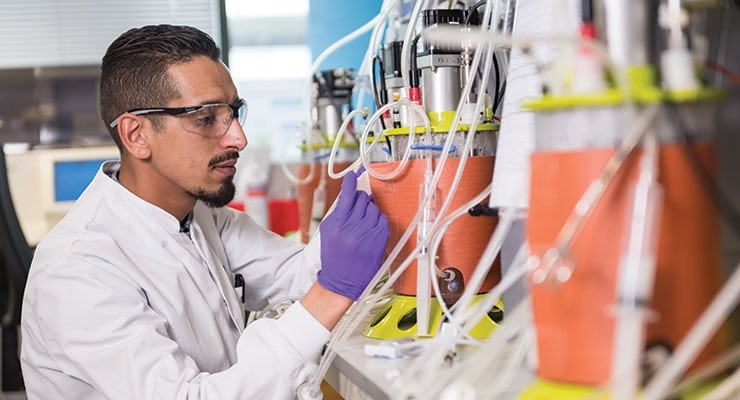The development and implementation of analytical methods are essential for success at all phases of a molecule’s journey, from pre-clinical development, to clinical manufacturing and ultimately, commercialization.
Critical Success Factors for your Analytical Program
- #1 Invest time and resources from the earliest stages of product characterization to identify the critical quality attributes and establish analytical methods
- #2 Follow the quality attributes throughout the process to understand clearance of impurities and behavior of the molecule
- #3 Begin development of a cell-based assay early to ensure an activity method is available at the start of development
- #4 Remember that process development can be accelerated with a robust analytical panel
A Balancing Act
Driven by the need for rapid advancement towards key milestones, an early-stage company must optimize the balance of speed and safety, while ensuring quality and gathering important information about the molecule. Ultimately, the analytical package must be designed to mitigate the risks for key milestones. Missing key milestones might result in failure at an early stage and the need for subsequent redevelopment and remanufacturing, which adds significant time and cost to the process.
Early-stage companies can, however, leverage a streamlined analytical program that focuses on what is needed for IND filing and for Phases I and II batches. The same analytical panel can be applied in characterization and comparison of drug substances (DS) in both preclinical and GMP batches with additional necessary safety controls to ensure GMP DS as will be dosed in humans the first time. This approach is time- and cost-efficient while delivering the necessary information for both the company and regulatory agencies.
For an early-stage company, a basic analytical package should include content, purity, activity and safety controls. Establishment of analytical methods can be accelerated by starting from use of standard or platform methods, such as H/UPLC, CE-SDS and glycan profile analysis. Specific needs for, such as product degradation or process impurities can be addressed by further development. Potential post-translational modifications, aggregation or degradation of the product could have an effect on the efficacy or safety and should be assessed. If a molecule is sensitive to oxidation, for example, a method to characterize the oxidation is needed.
Validation efforts will first focus on the purified product to ensure that the analytical method is fit for purpose (release and stability), meaning that it is able to detect what is it intended to detect with sufficient sensitivity. Following product characterization (i.e., identification of post-translational modifications and glycosylation) and production of the first GMP batches, the analytical methods will be refined as needed. The panel will then be capable of following characteristics of the molecule (including parameters that assess stability) to ensure batch-to-batch consistency.
Read our ebook and get critical insights for your analytical program, strategies and their impact on speed to clinic, speed to market and risk.








